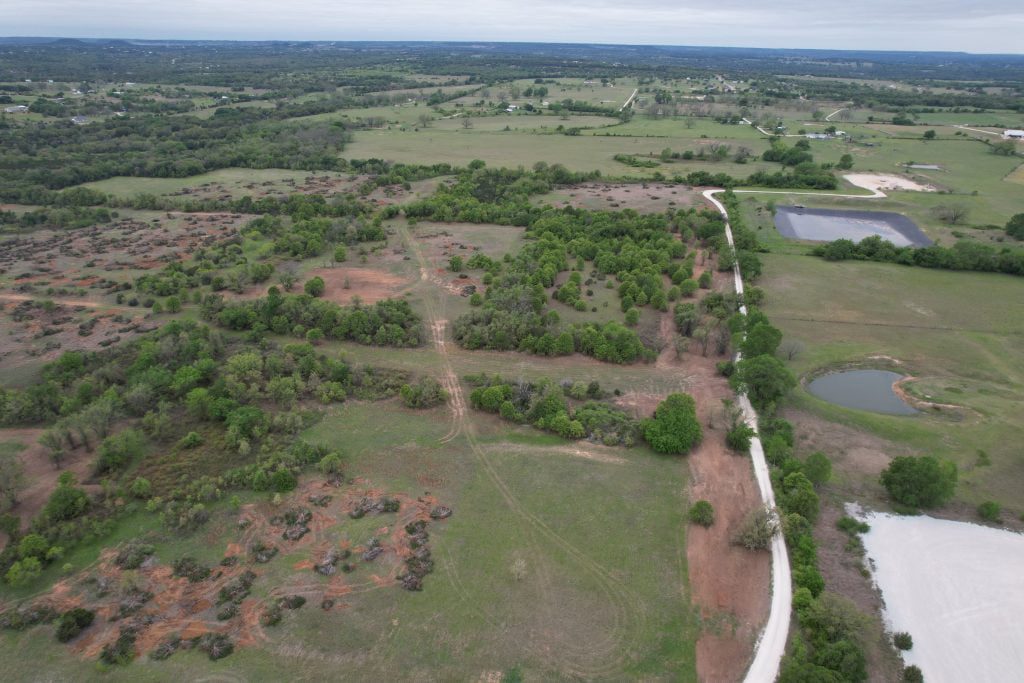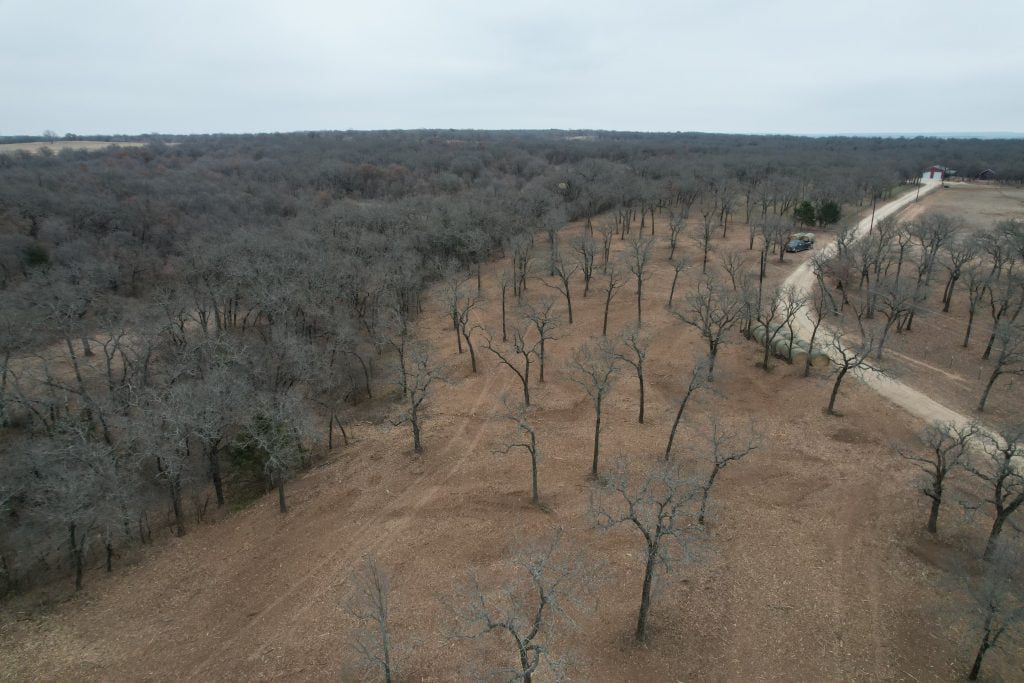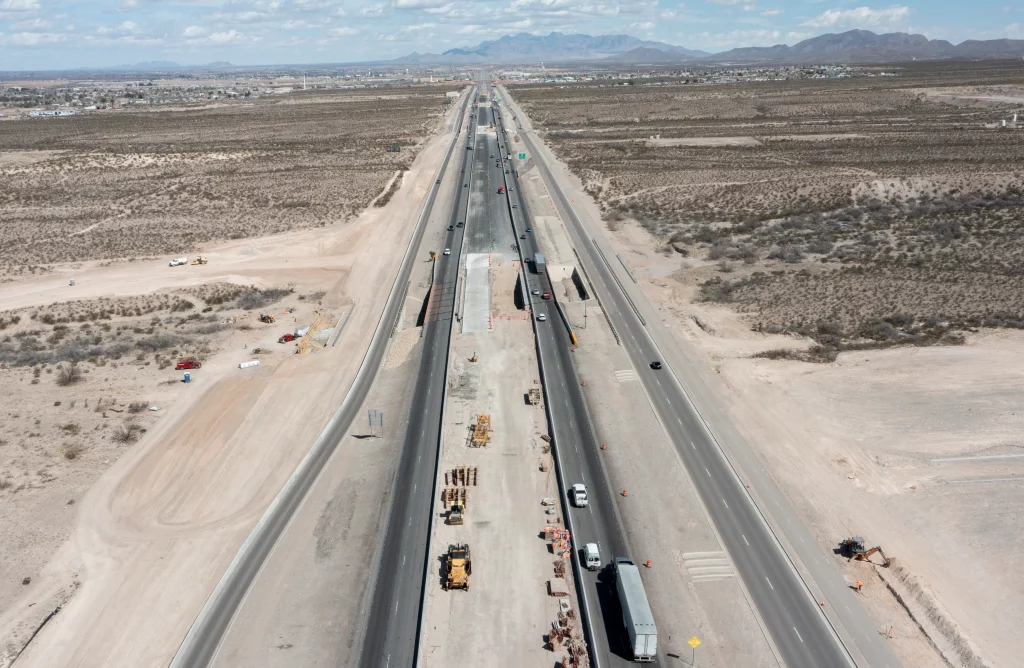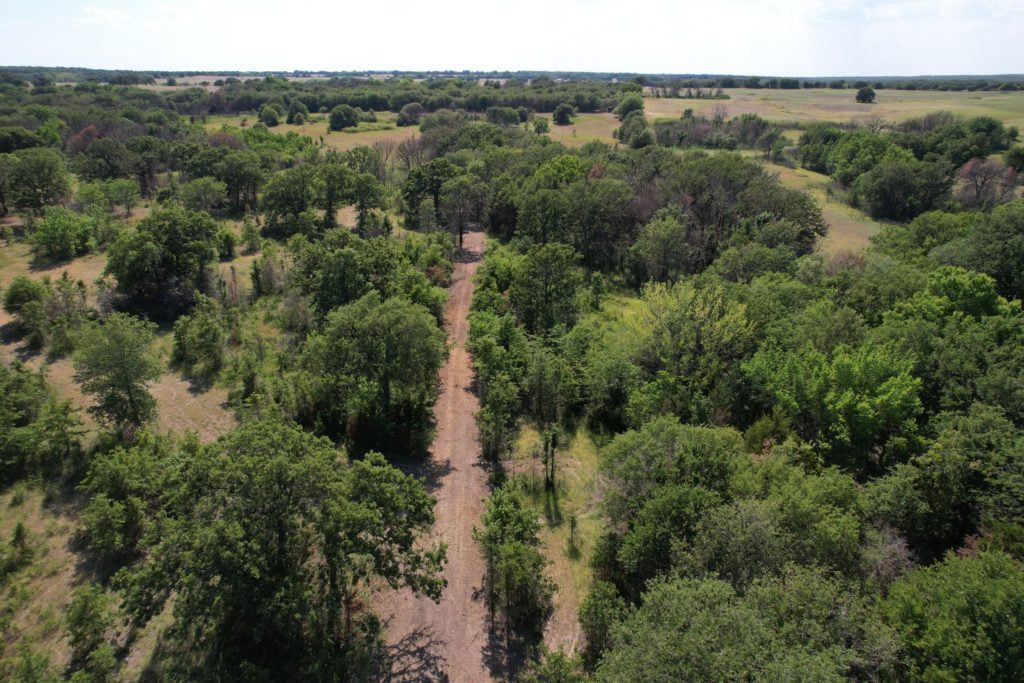Stewart Ranch Services
Bowie, Texas
Grand Prairie Road Building in Grand Prairie TX
DESIGN YOUR DREAM
PROPERTY
LAND
ACREAGE
DEVELOPMENT SITE
POND
Grand Prairie Road Building: The Process and Equipment Necessary for Construction in Texas
Road construction, evolving from rudimentary mud and brick to advanced machinery, narrates a compelling tale across the epochs. Throughout history, roads have been instrumental in linking communities. Our exploration now turns to the present, where we investigate Grand Prairie road-building techniques, unraveling the intricacies and essential equipment components vital for project success in places like Grand Prairie, TX. Materials like stone or mud bricks are integral, emphasizing the dedication to sustainability in contemporary construction endeavors.
Key Takeaways
Table of Contents
The Evolution of Grand Prairie Road Building

The journey of road construction unfolds as a crucial chapter in human history, shaping the course of societal progress. From rudimentary building materials to the advanced technology of today, there have been notable advancements in the techniques of road construction.
Urban streets and rural byways have become essential for commerce, leading to the adoption of fresh strategies and resources to cope with the increasing demand for convenience. This analysis traverses through the historical epochs, from ancient marketplace avenues to the present landscape of road building in Grand Prairie, TX.
Ancient Roads
Roads, pivotal for fostering connectivity across regions throughout history, have evolved significantly.
The early roads in Mesopotamia exemplify this evolution, employing mud bricks with bitumen for enhanced durability. These roads featured raised centers, optimizing drainage and ensuring smoother travel. The landscape of road construction underwent a paradigm shift during World War II, focusing on efficient interconnection between urban areas, ranches, and farms through rapid transport systems. This era marked the beginning of a profound transformation for rural roads across the country.
The implementation process extended beyond mere construction to encompass the meticulous maintenance of highways and ancillary features such as farm roads and ranch paths. Crucial considerations during this evolution included the design of effective drainage systems.
Modern Road Construction
Road building in Grand Prairie, TX has experienced a significant improvement due to the integration of advanced components and machinery. Modern construction techniques involve a diverse range of materials, such as soil stabilizers, asphalt, concrete, and dry lean concrete. This evolution not only leads to cost-effective road maintenance but also enhances the overall durability of the roads.
Asphalt, a crucial component, is composed of 95% aggregate and 5% binder. Similarly, concrete, frequently employed by the Texas Department of Transportation for highways and major asphalt roads, is a blend of water, sand, cement, and aggregates. The choice between these materials depends on various factors, including the intended purpose of the roadway, traffic volume, and geographical conditions.
Recent developments have ushered in a new era of swift progress in road construction, utilizing advanced machinery like excavators, compact track loaders, and dump trucks. These technological advancements contribute to heightened precision and efficiency in the construction process.
In addition to excavators and dump trucks, wheel loaders, working in tandem with dump trucks, are commonly used. Furthermore, advanced paving equipment plays a crucial role in constructing farm/ranch roads and urban pathways. It’s noteworthy that, while Texas has specific requirements with a focus on cost considerations, various regional elements are taken into account.
Grand Prairie Road Building - Essential Steps

The intricate process of road construction demands careful consideration of various essential phases for a successful outcome. From the initial stages of design conception to execution, encompassing land clearing, earthworks, paving, and quality control, each step plays a pivotal role in ensuring the security and stability of the constructed roads.
Delving deeper into the process, meticulous planning precedes any project, involving detailed land clearing that may include trench digging, tree removal, and soil grading. Planning also involves a comprehensive analysis of costs, scheduling considerations, and logistics, ensuring the availability of the necessary equipment, skilled labor, and reliable subcontractors. Additional measures include the application of asphalt coverings to enhance durability, all under the watchful eye of stringent quality assurance protocols.
In Grand Prairie, Texas, and neighboring areas, Stewart Ranch Services stands ready to provide a free quote, marking the starting point for the successful realization of your project.
Planning and Design
The initiation of road building in Grand Prairie, TX involves a meticulous planning phase, a critical step in ensuring the success of the project. During this stage, vital elements such as existing and anticipated traffic patterns, detailed cost-analysis data, design sketches, and financial prerequisites are carefully scrutinized. Notably, the involvement of civil engineers and city planners is indispensable in initiating a comprehensive planning process before transferring the project responsibilities to the designated construction company.
In the landscape of road engineering projects, specific considerations come to the forefront, including the establishment of speed limits based on the expected types of vehicles utilizing the roads. Moreover, the process includes angle grading, meticulous assessments of potential view obstructions, and the determination of necessary braking distances. These considerations collectively strive to uphold safety standards tailored to the local community’s needs, ensuring a seamless driving experience while prioritizing the comfort of drivers.
Land Clearing and Site Preparation
In the realm of road building in Grand Prairie, Texas, meticulous land clearing and site preparation are imperative processes. This critical phase involves the removal of vegetation, trees, and various materials from the land before construction can commence. Grading and excavation play vital roles in creating a level ground surface, crucial for proper drainage and to prevent issues like potholes in completed roads on farms or ranches.
The significance of land clearing extends to various construction projects, including buildings and roads. Tasks include adding or removing rock, dirt, trees, soil, trenching, ground excavation, embankment construction, and filling placement.
Advanced equipment, such as farm machinery, mini-excavators, and compact track loaders, accelerates the land-clearing process and ensures precision in height measurements during grading stages. This precision is essential for shaping road locations efficiently.
Additionally, installing culverts is imperative to address potential flooding and safeguard against disruptions to productivity. These measures contribute to establishing high-quality access routes, seamlessly connecting markets to local farmers’ lands.
The integration of advanced tools forms the foundation of an effective system for laying the groundwork in rural areas, enabling safe car travel without encountering disruptions caused by rainwater pools or inadequate underlying structures.
The application of paint on pavement and road markings
The fundamental aspect of rendering a highway both safe and effective lies in the meticulous application of pavement markings, and defining directions and lanes.
Tips for pavement and road marking:
Road marking regulations:
Complying with the unique road marking regulations of each country is paramount for those engaging in extensive road marking projects. The ability to paint diverse lines and symbols in accordance with these standards is crucial for success. Employing a multi-gun, multi-color setup, especially a striper with automatic gun control, simplifies the creation of broken lines with exceptional accuracy.
Curb Marking:
Addressing curb marking challenges is a common issue in pavement marking endeavors. The 90° angle of curbs necessitates a specialized gun configuration for effective spraying, overcoming this frequent obstacle in such projects.
Reflective road marking:
Reflective road marking introduces an additional layer of complexity, requiring a special material containing glass microspheres. To apply these microspheres, a line marker equipped with a pressurized bead reservoir, such as the Graco Linelazer HP reflective series, is essential. This advanced system boasts an adjustable nozzle, providing precise control over the width of the microsphere dispersion for heightened accuracy.
Grand Prairie Road Building - Farm to Market and Ranch Roads

Farm roads, with their distinct purpose of linking rural and urban areas while facilitating the movement of people and commodities, pose a unique challenge in terms of construction. Ensuring both safety and longevity is paramount in the process.
The initial phase involves a thorough assessment of the terrain to design an optimal route, followed by obtaining the necessary permits from authorities. Land clearing and soil preparation precede the actual construction, setting the foundation for a robust road network.
Grading and paving are critical steps, with the choice of asphalt or concrete depending on the specific project requirements. Incorporating drainage systems, constructing switchbacks, and implementing walls in hilly terrains are essential aspects of the road-building process. Each of these steps contributes significantly to the creation of safe and functional routes that cater to local agricultural needs, including those of ranches.
To ensure ongoing functionality, regular maintenance inspections are conducted, focusing on preserving the road’s good condition. Installing signage and features such as gutter curbs plays a crucial role in water control, particularly during periods of heavy traffic, helping prevent potential flooding.
Grand Prairie Road Building - Sustainable Practices

Road building in Grand Prairie, TX presents environmental challenges, leading to the adoption of sustainable practices to mitigate its impact. Selecting materials with a reduced environmental footprint that can decompose in an eco-friendly manner is critical.
Choosing recycled asphalt and concrete over new materials, and designing durable products for extended longevity, is a strategic move. This not only reduces the quantity of materials used but also results in significant cuts in maintenance costs. Implementing these practices into ongoing road construction processes is essential for establishing more environmentally responsible alternatives in the future.
Case Study: Successful Road Construction Project in Texas

El Paso’s I-10 reconstruction and widening venture stands as a prime example of adeptly managing the intricacies of road construction, reminiscent of similar endeavors in Grand Prairie and San Antonio.
Successful navigation through the project necessitated thorough preparation in terms of budgeting and adhering to strict timelines. Key to the triumph was the engagement of experienced personnel dedicated to continual training and unwavering adherence to safety protocols. Equally crucial was the integration of cutting-edge machinery, ensuring precision and expediting the overall project timeline.
This highway restructuring’s success underscores the significance of employing advanced techniques in roadwork, showcasing favorable outcomes resulting from intentional planning, skilled labor, and the application of state-of-the-art equipment within the Texas context of highway construction.
Summary
The fascinating evolution of road construction, progressing from ancient civilizations’ use of mud bricks and stone to the contemporary application of advanced materials and machinery, is a testament to human ingenuity. Achieving success in any project relies on careful planning and thorough site preparation.
In Grand Prairie, road building has gained significant importance in our globally connected society. The focus is on creating roads that are not only safe but also resilient enough to endure for generations. This entails implementing suitable practices throughout the construction process, including the careful sourcing of materials such as mud or any other necessary supplies.
Frequently Asked Questions
What is the meaning of road building?
In the construction of roads, materials like asphalt and concrete are frequently utilized. These materials come from mining sites that transport gravel to different plants for production, playing a significant role in Grand Prairie road-building.
How do you build a road?
Grand Prairie road-building demands precision and expertise. The initial stages involve land clearing, excavation, and meticulous grading to lay the groundwork.
- Subgrade: During subgrade work, existing grass and topsoil are removed to establish a sturdy foundation.
- Material types: Incorporating materials like road base, crushed concrete, screened gravel, and asphalt millings is essential for constructing resilient roads.
Stewart Ranch Services offers a one-stop solution for your Grand Prairie Road Building project. Our comprehensive approach ensures every aspect is handled with care, delivering a road infrastructure built for longevity.
